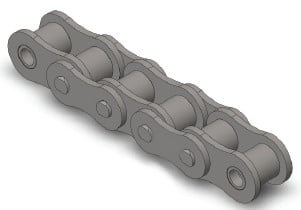? Type of input electrical power (electrical motor, internal combustion engine  with mechanical or hydraulic drive).
with mechanical or hydraulic drive).
? Type of products for being driven.
? Amount of horsepower necessary to supply suffi cient electrical power for the driven shaft.
? Full load pace from the fastest operating shaft (rpm).
? Desired speed from the slow operating shaft ( or the essential speed ratio). NOTE: If speeds are variable figure out the horsepower to get transmitted at each and every pace.
? Diameters in the drive and driven shafts . . . This worth may well restrict the minimum variety of teeth for the sprockets.
? Center distance of the shafts.
? Note the position and any space limitations that may exist. Normally these limitations are on the maximum diameter of sprockets (this restricts the use of single strand chains) or the width in the chain (this restricts using multi-strand chains).
? Conditions from the drive like a determination of your class of load (uniform, moderate or heavy), severe working temperatures or chemically aggressive environments really should be mentioned.
Abbreviations Utilized in Equations
N Amount of teeth about the huge sprocket.
n Variety of teeth around the tiny sprocket.
R Pace in revolutions per minute (rpm) with the substantial sprocket.
r Velocity in revolutions per minute (rpm) with the little sprocket.
C Shaft center distance in chain pitches.
HP Horsepower rating in the drive motor or engine.
KW Kilowatt power rating of drive motor or engine if using metric units.
SF Support Factor
